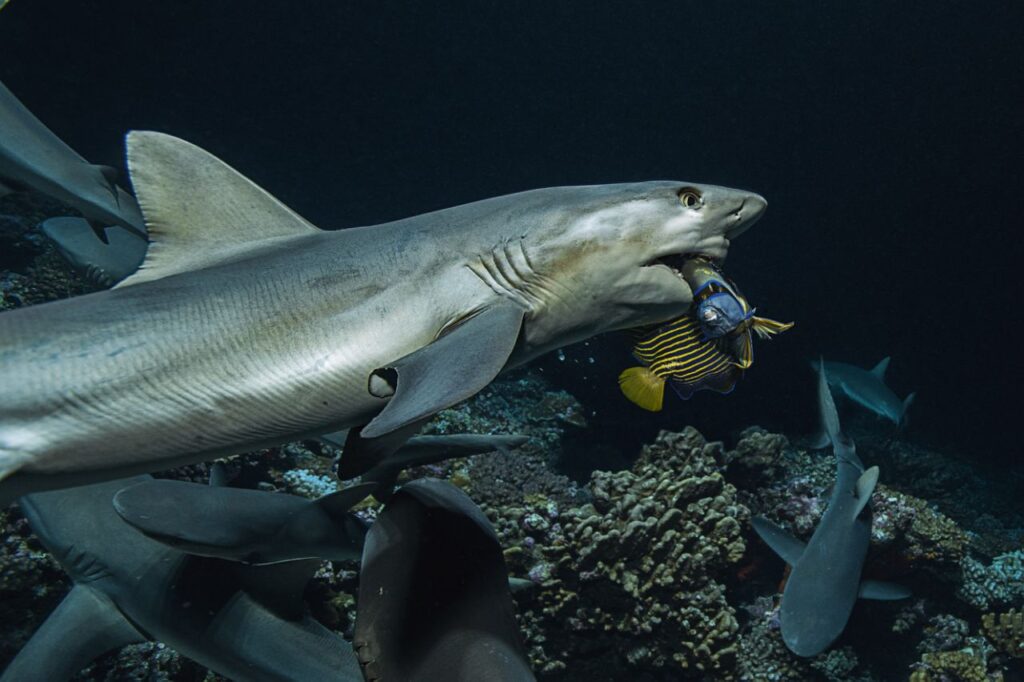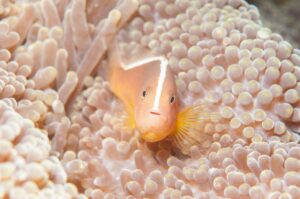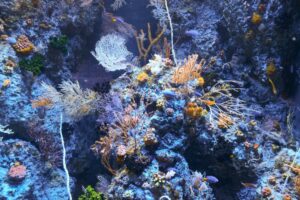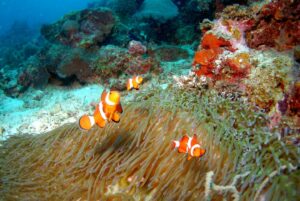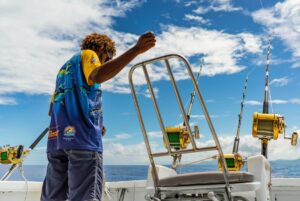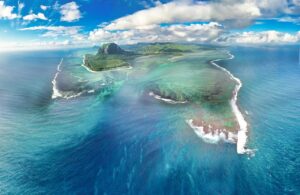Philippines is a distant and not yet fully explored island state by tourists. The main attractions of the islands are rocks, waterfalls and sharks. Sharks in the Philippines coastal waters are not aggressive, so you can enjoy unique experience and swim with these marine creatures.
Check this guide about ethical ways to swim with whale sharks in Philippines; get more details about places where you can meet these creatures, season, day tours, safety tips and information about other sharks living in the coastal waters of the island.
Click here to join Whale Shark Diving Tour in Oslob.
Whale Sharks in the Philippines
The whale shark is the largest fish living on the planet. The average length of a mature fish is 12 meters, and some giants grow up to 20 meters. It has a huge mouth, but very small larynx.
The standard diet of a whale shark is plankton, small jellyfish and squid. The fish has a very calm character, it is slow and clumsy. So, don’t be afraid to swim next to such a giant: whale sharks simply don’t pay attention to divers.

Where to Swim with Whale Sharks in the Philippines
Whale sharks in the Philippines are found on several islands:
- west coast of Bicol Island;
- south coast of Luzon;
- the village of Donsol next to Legazpi;
- near the city of Oslob;
- in the south of Cebu.
In these places, whale sharks are simply fed daily for many months, and as a result they get used to it and swim to these places. Usually shark dinners take place from six in the morning until noon. Several boats depart from the shores: some with food, others with tourists.
Prices to Swim with Whale Sharks
If you just want to take a look at the giant marine creatures from the boat, while the crew will feed sharks, you can buy a ticket for 600-700 pesos.
But if you want to dive with whale sharks, you’ll have to pay 1000-1500 pesos. You can enter the water only being accompanied by an instructor. The mask and fins are already included in the price. For additional 500 pesos, the instructor will shoot a memorable video for you on an underwater camera.
Swimming with Whale Sharks in the Philippines: Pros and Cons
Despite the fact that whale sharks aren’t dangerous to humans, it’s prohibited to touch them. It is nearly impossible to predict how this huge fish will behave. If something frightens such a huge fish, it can easily kill a person with one fin.
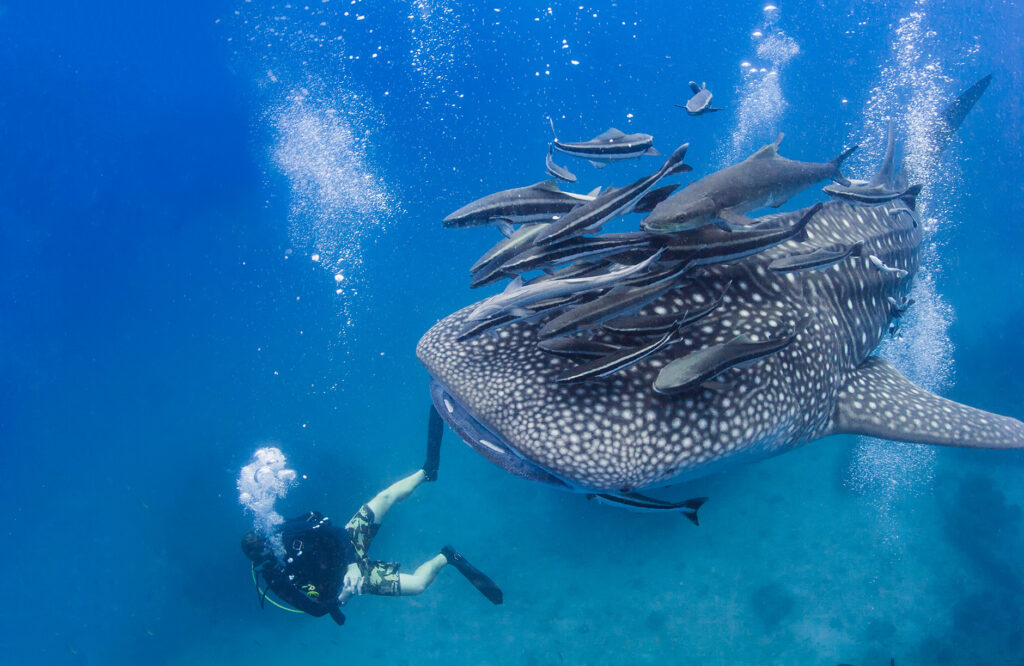
Swimming with whale sharks on Cebu island in the Philippines has gained great popularity since 2011. The largest number of tourists all over the world come here for such a unique experience. But this activity has enough drawbacks.
Large groups of tourists arrive in Oslob daily with the goal to see the whale shark. But the problem is that the location where tourists are brought is not the natural habitat of whale sharks. All of them are hand-fed. If you’re looking for an opportunity to meet whale sharks in their natural habitat, then go diving in Koh Samui, you can these marine creatures there in March and April.
Whale sharks in the Philippines are endangered and their numbers are in sharp decline. Only in 1998, the shark population began to be protected by the law, as they were exterminated because of their meat and fins. Despite the measures taken, poaching still takes place today. The main sales market is China. The carcass cost of one whale shark can be really high. Meat, fins and oil are used for food, and the skin is used for bags.
Sharks in Oslob
The first groups of tourists in Oslob usually depart at 6 am, their trip lasts until lunch. Several boats sail from the shore, some of them are those who feed the giants, some of them are with curious tourists. Boats depart at a distance of about 150 meters from the shore. Travelers, as a rule, are not very interested in watching a huge whale shark, everyone is in a hurry to take photos as a keepsake.
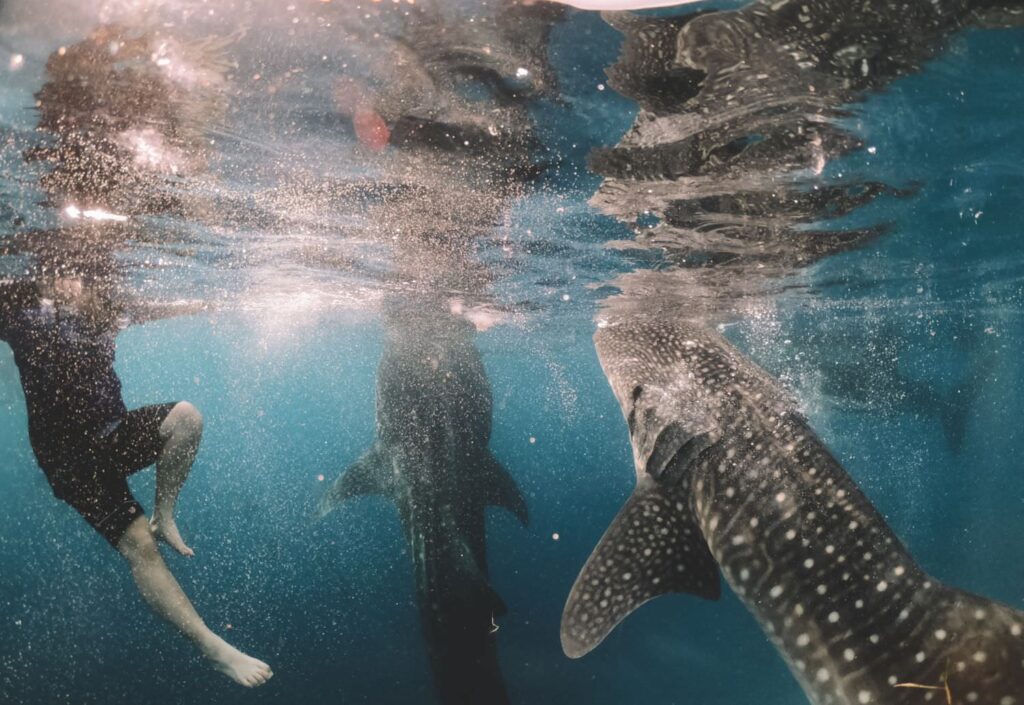
Imprisonment for touching a shark
You can go to jail for getting too close to a shark. But this rule does not work in reality. There were even several studies on this topic, during which it was found that more than 95% of tourists who decided to swim with whale sharks in the Philippines, at least once, but touched them. Of course, in most cases this happens by accident.
In addition, many sharks have scars from collisions with boats. This leads to another important problem, they don’t perceive boats as a threat, including those that are not touristic, swimming too close, which can cause injury.
Nutrition problems
Being hand-fed sharks are losing necessary skills that help them find food on their own. In addition, they don’t receive the necessary amount of nutrients, as during hunting, because they spend up to 6 hours a day feeding in Oslob. And they are fed with one of the krill types, that are bought in large quantities from fishermen to save money.
Problems with migration and offspring breeding
Another point against swimming with whale sharks in the Philippines is the impact on migration. Whale sharks are very mobile fish, accustoming them to feed regularly in one place disrupts natural processes. One shark did not swim away from Oslob for about a year, given that this species is under the threat of extinction, such changes in the habitual way of life of whale sharks may affect the breeding of offspring.
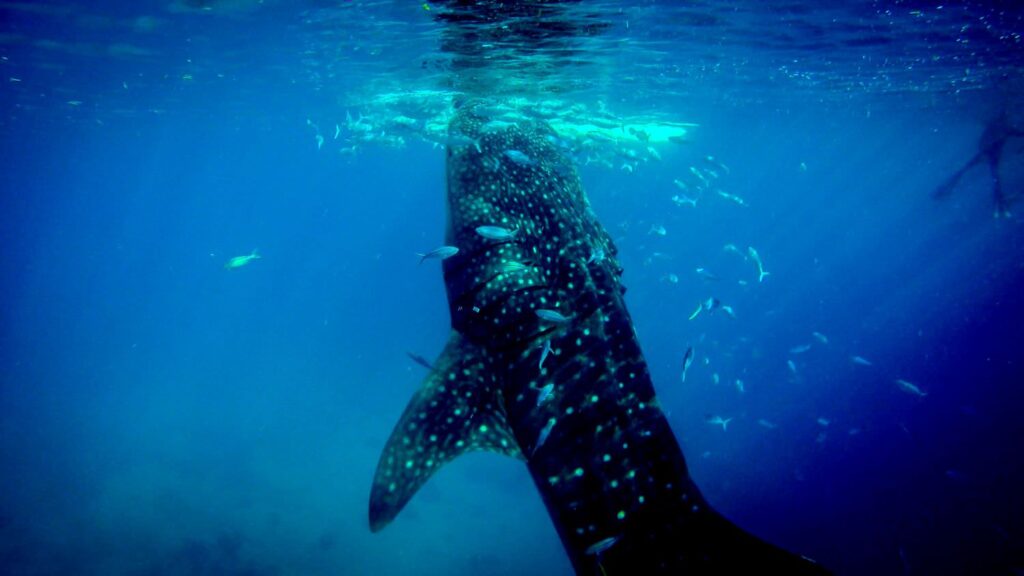
At the same time, the whale shark hype has its benefits for Oslob. Even housewives have become entrepreneurs there and make various souvenirs, smoothies, drinks and snacks for tourists. Another plus is that local fishermen have practically stopped destroying coral reefs located nearby as a result of their activities. Now many fishermen only need to supply a certain amount of shrimp (at best!) to those who feed sharks.
Swimming with fox sharks: where they live
They are also called sea foxes. In the Philippines, these sharks have chosen the northern coast of Cebu and the small islands nearby (such as Malapascua). Such “foxes” grow up to six meters in length. At the same time, most of their body is a fin.
Fox sharks are predators, but they do not attack humans. On Malapascua, they swim close to the shore, this fish is very shy, so you should not wave your hands next to them, talk loudly and splash – they will swim away.
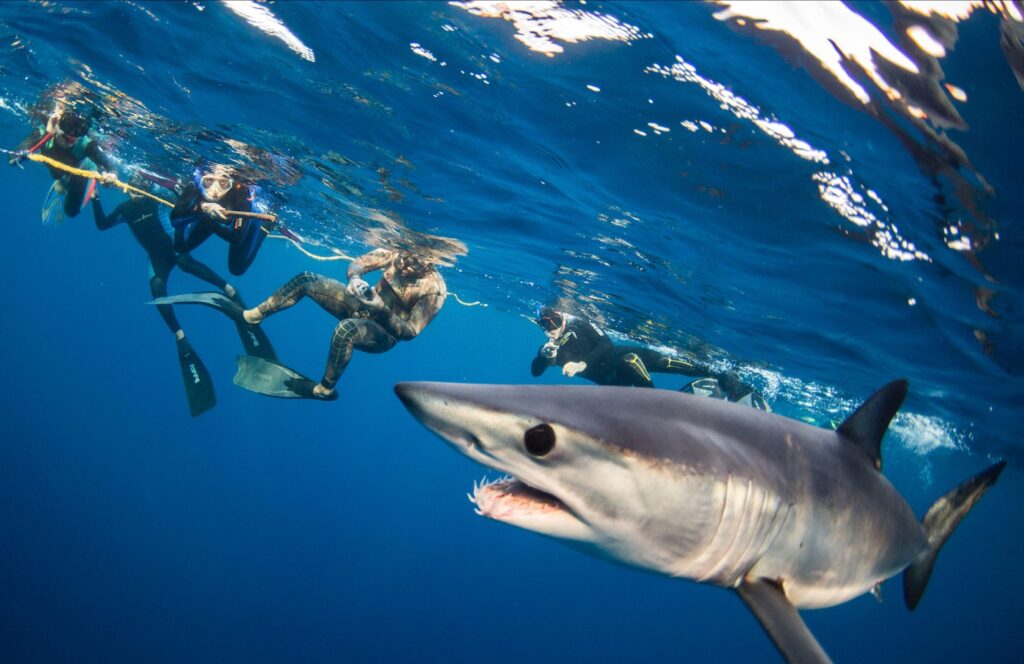
Dangerous Shark Species in the Philippines
There are no white sharks or other species that are dangerous to human. But in the north of Mindoro Island there are blacktip reef sharks. These sharks have sharp teeth and strong jaws, and they can grow up to three meters. They never attack people first, but if they see a threat in a diver, they can get very angry.
Such an accident happened to one tourist: the young man was scuba diving in Philippines and did not notice the shark that swam up. Out of fear, he grabbed a knife and slashed at the fin of the fish. In response, the gray shark bit off three of the diver’s fingers.
Therefore, be careful when swimming with any kind of these fish and do not show aggression towards them. Just because they don’t want to attack humans doesn’t mean they can’t attack.
